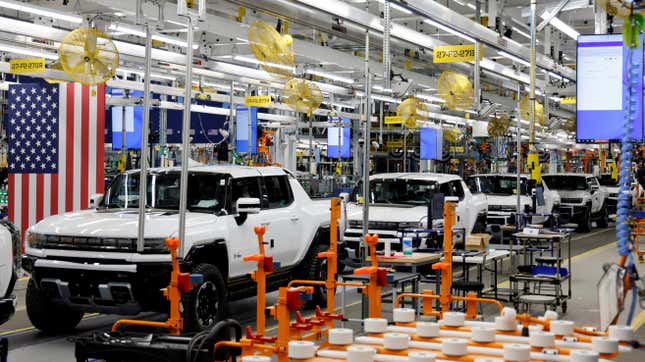
The number of Americans leaving dirty jobs for green ones is rising rapidly, increasing tenfold between 2005 and 2021. Overall, however, fewer than 1% of all workers who leave a job in a carbon-intensive industry (which include coal, mining, oil and natural gas) appear to transition to a low-carbon industry job (such as those associated with the production of renewable energy like solar and wind or the production of EVs), according to a new working paper from the National Bureau of Economic Research. In other words, the vast majority of workers in dirty jobs switch to another dirty job in the wake of a rapidly warming world.
The researchers looked at roughly 130 million online job profiles from Lightcast, a labor market research firm, to identify transitions from carbon-intensive production jobs to green ones in the US. The data on workers’ transitions go back to the earliest reported jobs, some of which begin before 1970, and were most recently updated to the end of 2022.
Transitioning the US to a low-carbon economy is a great undertaking, and jobs related to electric vehicles are driving the transition. “The oncoming manufacturing of the battery plants and EV plants, I think it’s going to be really, really important for green workers in the future,” said Mark Curtis, an economics professor at Wake Forest University and a co-author of the study.
The green workforce will likely be boosted by the Inflation Reduction Act, which was signed into law last year and allocates billions into clean tech, in a bid to reduce planet-warming greenhouse gas emissions, in the years to come. Since the bill’s signing, $132 billion worth of new clean energy projects—from EVs to batteries to renewable energy projects—have been announced, which are expected to create 86,000 jobs, according to a Bank of America report.
Which workers are more likely to transition out of dirty jobs?
Some workers and some economies are able to make the transition away from fossil fuels better than others, according to the study. The researchers found that younger workers and those with a bachelor’s degree are more likely to make a dirty-to-green job transition.
In some local labor markets, transitions to green jobs appeared rare, despite a large number of workers in dirty jobs, such as those in West Virginia, who may face a decline in job prospects due to climate mitigation policies. Some states like California, Iowa, Nevada, and Arizona feature relatively high rates of transition from dirty-to-green jobs; whereas Delaware, Louisiana, Texas, Oklahoma, and Wyoming have the highest number of dirty-to-dirty moves. The latter suggests these places are going to be most vulnerable in the transition, if there’s a big decline in dirty jobs, Curtis said.
With most workers of dirty jobs still transitioning into other dirty jobs, where then do the rest of workers go as demand in fossil fuel-related sectors declines? The study found the sector to which carbon-intensive industry workers are more likely to transition is manufacturing, which includes both dirty and green jobs.